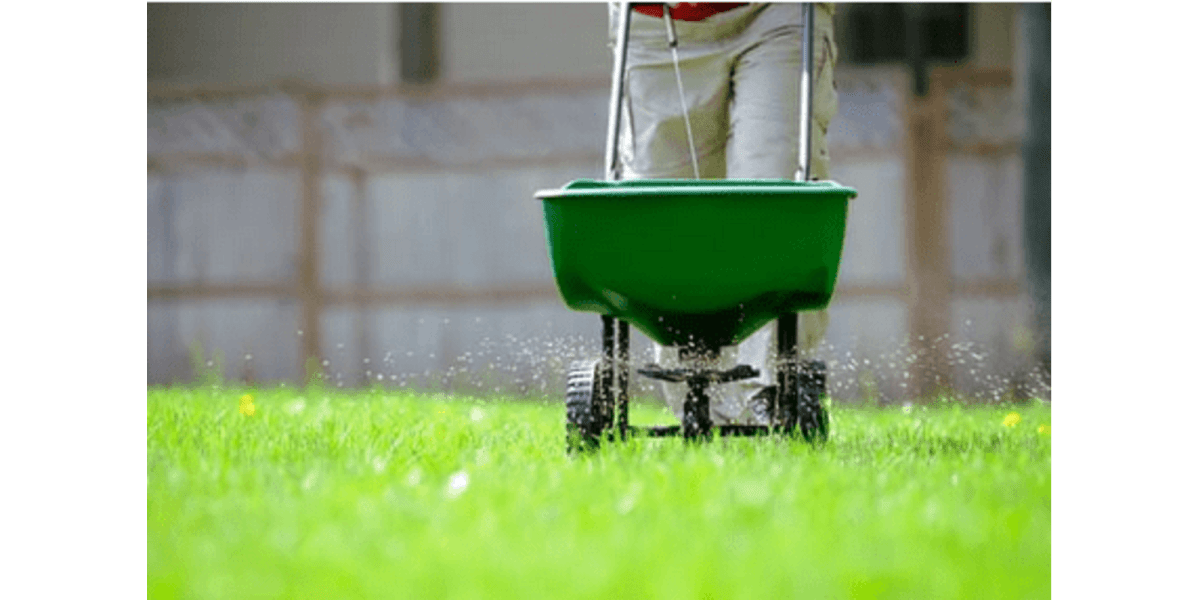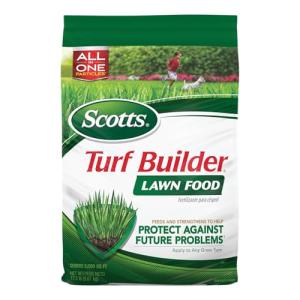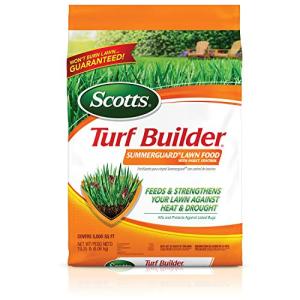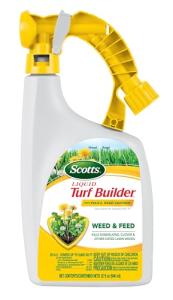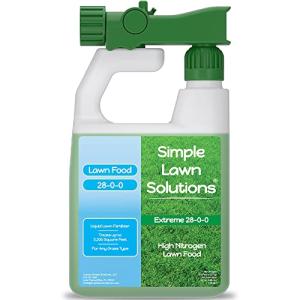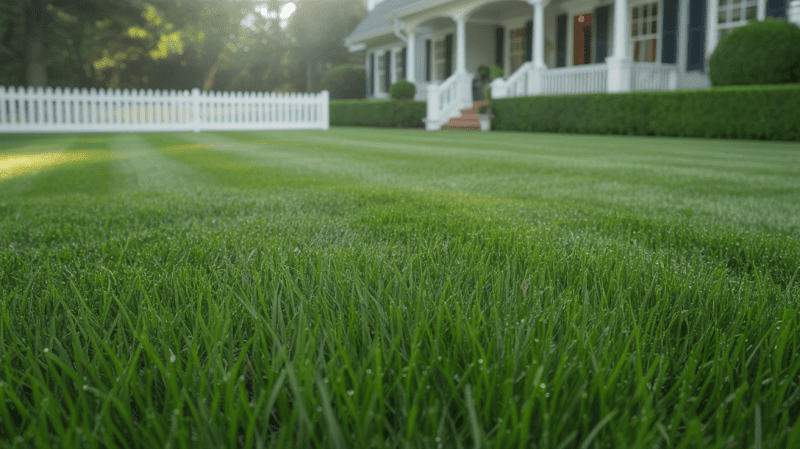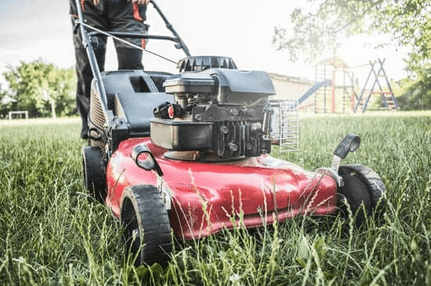Feeding Your Lawn the Right Way: Understanding Fertilizer Options

Slow-Release vs. Quick-Release
Keeping your lawn healthy and green can be tough, especially with all the fertilizer types. It's hard to know which one is best for your lawn.
Knowing what your lawn and soil need for good fertilization is important. We'll examine two common fertilizer options and how they affect your lawn.
Choosing the right fertilizer is key to a beautiful, healthy lawn. We'll discuss the pros and cons of different fertilizers, helping you pick the best one for your lawn care needs.
Key Takeaways
-
Understanding your lawn's specific needs is crucial for effective fertilization.
-
Different types of fertilizers offer unique benefits and drawbacks.
-
Choosing the right fertilizer can significantly impact the health of your lawn.
-
Fertilization is a critical component of a comprehensive lawn care strategy.
-
Selecting the best fertilizer depends on several factors, including soil type and the specific needs of the turf.
Understanding Fertilizer Basics
Knowing about fertilizers is crucial to maintaining a healthy lawn. Fertilizers help plants grow by providing essential nutrients, such as nitrogen, phosphorus, and potassium, which are vital for a healthy lawn.
Let's explore the difference between slow-release and quick-release fertilizers. This is important when choosing the right fertilizer for your lawn.
What Makes a Fertilizer "Slow-Release" or "Quick-Release"?
The main difference is how they release nutrients. Slow-release fertilizers give nutrients slowly, keeping plants fed steadily, while quick-release fertilizers give nutrients fast, causing plants to grow quickly.
The Science Behind Nutrient Release Mechanisms
The science behind how fertilizers release nutrients is interesting. Slow-release fertilizers have coated granules that slowly break down, releasing nutrients. Quick-release fertilizers have water-soluble nutrients that dissolve fast in soil moisture.
Slow-Release vs. Quick-Release Fertilizers: Pros and Cons for Lawn Care
Knowing the difference between slow-release and quick-release fertilizers for lawn care is important. Each type has its own benefits and drawbacks, and their unique makeup affects how well they work.
Key Differences in Composition and Design
Slow-release fertilizers slowly release nutrients over time. They use coated or encapsulated granules for this. This slow-release fertilizer helps plants grow steadily and avoids over-fertilization.
Quick-release fertilizers, on the other hand, dissolve fast. They give plants a quick nutrient boost. But, this fast release can quickly use up nutrients and harm the environment.
Key differences in composition include:
-
Granule coating or encapsulation in slow-release fertilizers
-
Rapidly soluble ingredients in quick-release fertilizers
Nutrient Availability Timeline Comparison
Slow-release fertilizers provide nutrients for weeks or months, while quick-release fertilizers provide a quick nutrient boost but are quickly used up. A study found that slow-release fertilizers can feed plants for 3-4 months, while quick-release fertilizers last 1-2 weeks.
Cost Comparison and Value Analysis
We see a difference in the cost of slow-release and quick-release fertilizers. Slow-release fertilizers are pricier at first but save money in the long run. They need less frequent use. Quick-release fertilizers, however, might cost more because they need more frequent use.
Slow-release fertilizers are better for the environment and last longer, while quick-release fertilizers give quick results. Knowing these differences helps lawn care experts and homeowners choose the right fertilizer.
Slow-Release Fertilizers: A Deeper Look
Slow-release fertilizers represent a significant advancement in lawn care. They offer a better way to feed your lawn. These fertilizers slowly release nutrients, allowing your lawn to grow steadily without frequent fertilization.
Advantages for Long-Term Lawn Health
Slow-release fertilizers have many benefits for your lawn's health. They help your lawn grow consistently by providing nutrients gradually, resulting in a strong root system and a dense lawn.
They also reduce nutrient runoff, which is beneficial for the environment. Plus, you won't have to fertilize as often. This saves you time and effort in lawn care.
Disadvantages and Limitations
However, slow-release fertilizers have some downsides. They cost more upfront than quick-release fertilizers and don't give immediate results because they release nutrients slowly.
Homeowners should consider the following points before selecting slow-release fertilizers. It's important to consider whether they fit their lawn care needs.
Quick-Release Fertilizers: A Closer Examination
Quick-release fertilizers are a quick fix for lawn problems, but they require careful consideration before use. They release nutrients quickly, making them quickly available to plants.
Benefits for Immediate Lawn Issues
These fertilizers are ideal for addressing quick fixes, such as nutrient gaps, weather stress, or pest damage.
-
Rapid Nutrient Availability: They provide a quick health boost to lawns, helping them recover from stress.
-
Targeted Application: You can apply them right where needed, ensuring nutrients reach the right spots.
-
Flexibility: You can adjust the frequency of application based on your lawn's specific needs.
Drawbacks and Potential Problems
Quick-release fertilizers have downsides to think about.
-
Risk of Over-Fertilization: The fast release of nutrients can cause over-fertilization if not used right.
-
Environmental Impact: Excessive nutrients can run off into water, harming the environment.
-
Short-term solution: They may need to be applied more frequently since their effects don't last long.
Strategic Application: When and How to Use Each Type
A lush, vibrant lawn starts with the right fertilizer application. Knowing when to use slow-release and quick-release products is key. Lawn care experts can get the best results by using each type wisely.
Seasonal Considerations for Maximum Effectiveness
Seasons change, and so does lawn health. Slow-release fertilizers are great for growing seasons because they feed the lawn steadily. On the other hand, quick-release fertilizers are ideal for quick fixes, such as when the lawn needs a nutrient boost.
For example, slow-release fertilizers applied in early spring help support new growth, and quick-release fertilizers applied in late summer can provide a health boost to the lawn before winter.
Combining Both Types for Optimal Results
Many experts combine slow-release and quick-release fertilizers for optimal results. This mix helps fix immediate problems and supports long-term health.
They often begin with a slow-release fertilizer as a base and then add quick-release fertilizers to address specific needs.
Environmental Impact and Responsible Use
If not used properly, fertilizers can harm the environment. Too much or the wrong application can pollute water and harm nature.
To avoid this, it's crucial to apply fertilizers correctly. Use the right amount for your lawn and time it right to waste less.
Conclusion: Choosing the Right Fertilizer for Your Lawn Needs
Choosing the right fertilizer for your lawn is key. It's essential to understand the distinction between slow-release and quick-release fertilizers. Consider the type of your lawn and its soil to make the best choice.
Slow-release fertilizers feed your lawn for a long time, helping it grow strong and healthy, and you don't need to apply them as often. Quick-release fertilizers work fast to fix lawn problems. Determine your lawn's needs and the surrounding environment.
Choosing the right fertilizer means finding a balance. You want a healthy lawn and to protect the environment. The right fertilizer will help you achieve both goals.
FAQ
Q: What is the main difference between slow-release and quick-release fertilizers?
A: Slow-release fertilizers give out nutrients slowly over time. Quick-release fertilizers, on the other hand, release nutrients quickly.
Q: How do I choose between slow-release and quick-release fertilizers for my lawn?
A: Your choice depends on your lawn's needs and preferences. Consider your grass type, climate, and soil.
Q: Are slow-release fertilizers more environmentally friendly than quick-release fertilizers?
A: Yes, they usually are. Slow-release fertilizers release nutrients slowly, which is better for the environment.
Q: Can I use both slow-release and quick-release fertilizers together?
A: Yes, mixing both can be a good idea. Slow-release fertilizers offer long-term nutrition, while quick-release fertilizers can provide a quick boost.
Q: How do seasonal considerations impact the choice between slow-release and quick-release fertilizers?
A: Seasonal changes, such as weather and growth patterns, matter. Slow-release fertilizers are good for the growing season, and quick-release fertilizers can help after stress.
Q: What are the potential drawbacks of using quick-release fertilizers?
A: Quick-release fertilizers can cause over-fertilization and burn lawns. They also pollute the environment and need more frequent use.
Q: How do I determine the best fertilizer application schedule for my lawn?
A: The best schedule depends on your lawn's needs and climate. Follow the manufacturer's instructions and consider soil tests and weather.
Q: Can slow-release fertilizers provide enough nutrients during periods of high lawn growth?
A: Slow-release fertilizers offer steady nutrients. However, during periods of very high growth, you may need a quick-release fertilizer for extra nutrients.
DISCLAIMER
This document is provided for general information purposes only and should not be relied upon as providing legal advice, technical, or specific operational guidance to the reader, whether as to the practices described in the document or the applicable legal requirements and regulations. Lawnfly.com expressly disclaims any responsibility for liability arising from or related to the use or misuse of any information in this document.
